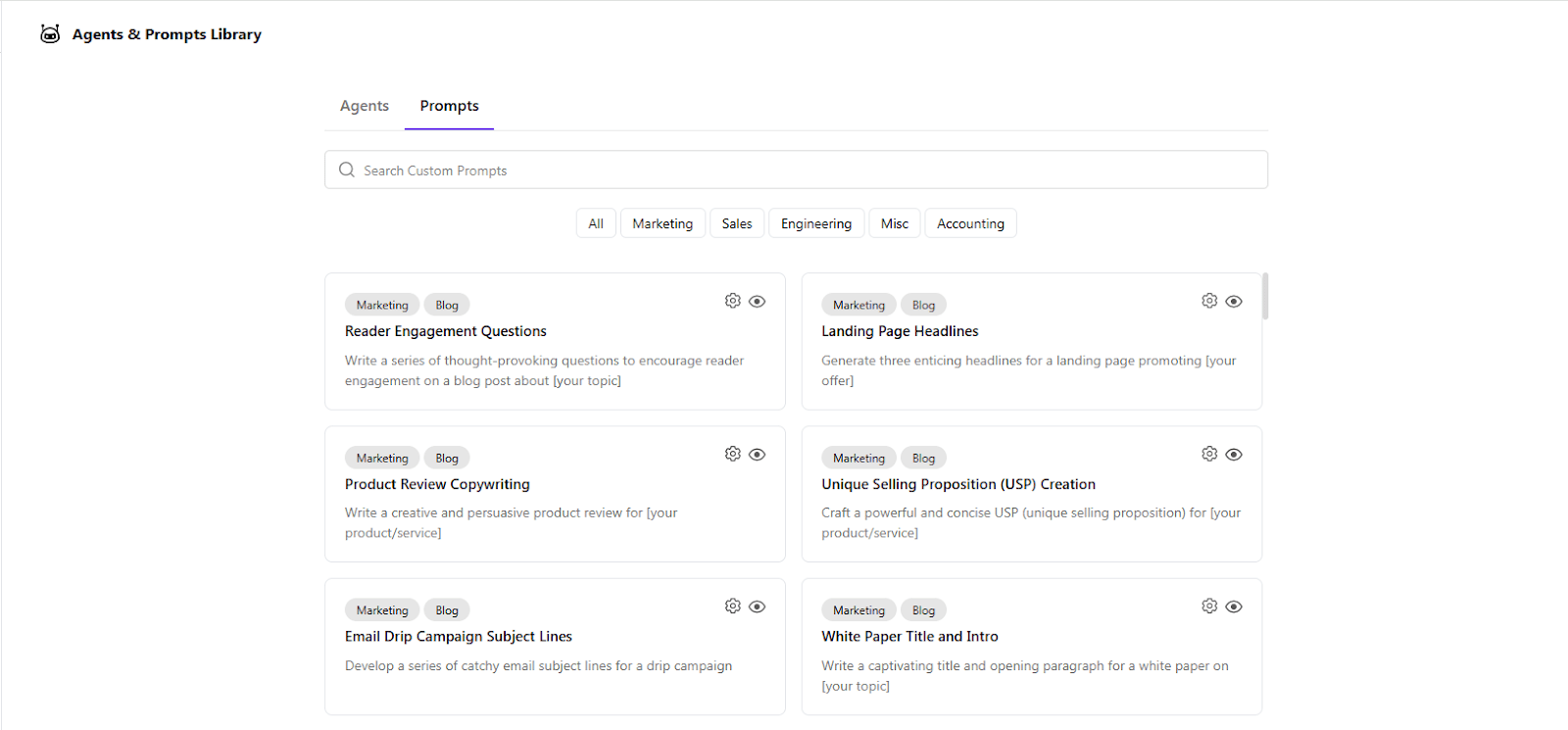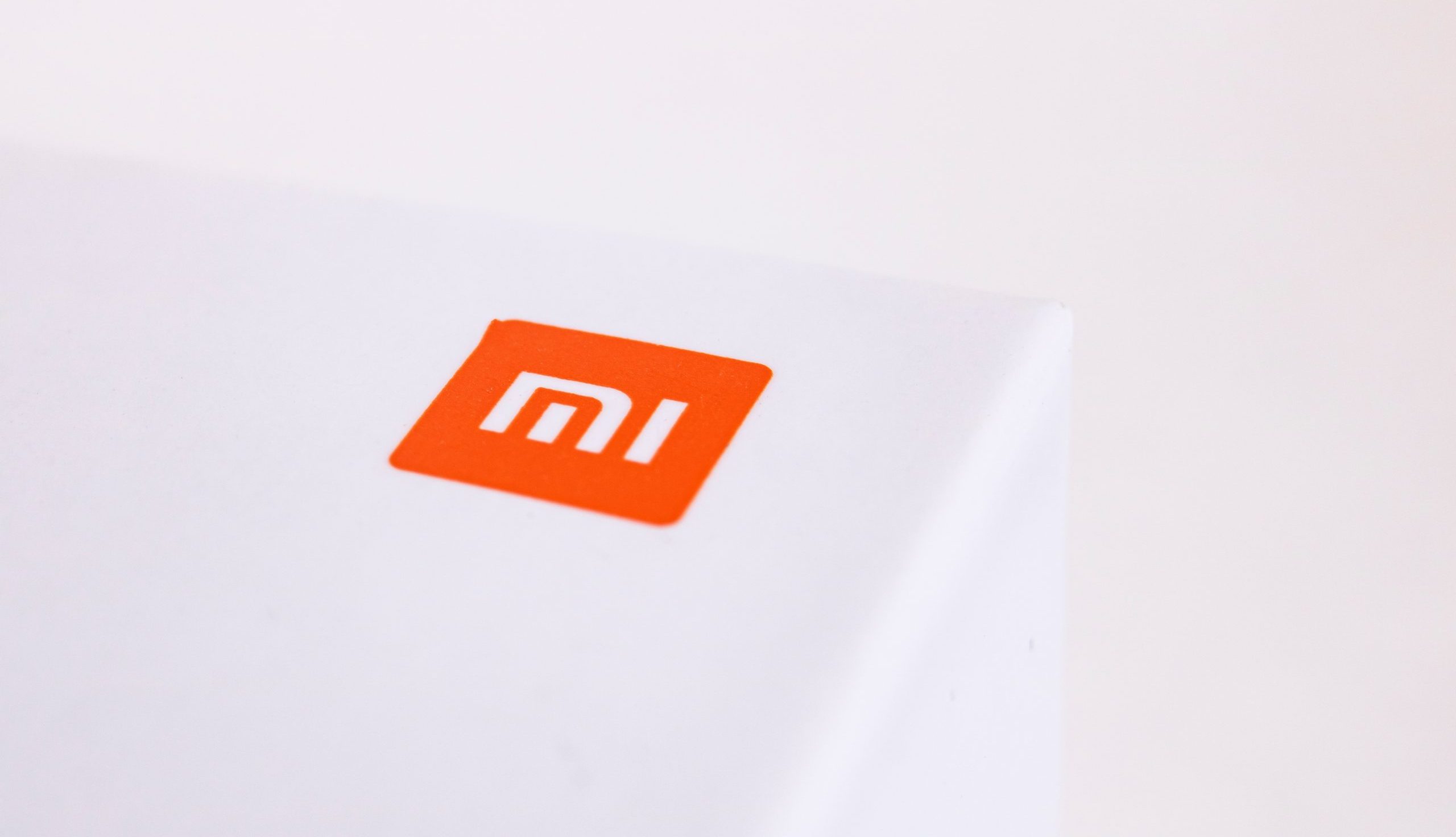A prompt library is a collection of different types of prompts. They are predesigned and sufficiently fulfill the goal of being a useful resource to accelerate your workflow.
Gen AI has been a huge topic of discussion for every community. Whether you are a lawyer, researcher, developer, or writer integrating AI into your operations has become critical. People are learning about practical workflows involving AI to reap the most benefits from its capabilities. One of those efficient centric approaches is the AI prompt library for your Gen AI platform.
I like this definition of prompt better: It means to cause something to happen; make somebody decide to do something. Prompt libraries are collections of pre-designed prompts. They allow Gen AI models to generate relevant valuable insights, eliminate monotony, and sometimes even amaze you.
There is just one catch. The number of prompts can increase significantly and organizing them becomes a hassle, how? More on that later. So prompt templates are useful but how do you curate them, where do you find them, how do you even decide a prompt structure? Find answers to all these questions, more helpful tips, & practices in this article.
Understanding Prompt Libraries
I’m quite sure you are using ChatGPT on a daily basis. Every prompt you enter generates either fruitful or straight up poor results. The line that separates those two results is a well explained ‘prompt’.
Definition: A prompt is a set of instructions allowing Gen AI to perform tasks according to your requirements.
Now for understanding prompt libraries let me share a simple experience with you. I was working on a social media strategy and wanted to generate a few content resources for the same. I was using ChatGPT. After a few iterations I finally decided to use an old prompt which generated better results.
So begin my endless scrolling and constantly pressing CTRL+F to find the right words. At that point of time I realized “Wait a second, I was using AI tools to save time”.
To save time and get better results—this is the underlined benefit of AI prompt libraries that we often ignore. If I have to let say perform 10 tasks everyday for every task using Gen AI I have to do multiple iterations of prompts. Now there are universally common responses and hyper-personalized responses. A prompt makes all the difference so why wouldn’t I save the prompt that gave me a competitive edge.
Key Features of the Best Prompt Libraries
There is a checklist to determine if the AI prompt library is well defined or otherwise. Based on my experiences I am laying out the points.
Best Practices for Building Prompt Libraries
An AI prompt library does not mean it has prompts generating the best output. If you look at the structure of a prompt you have to take context into consideration. It’s a crucial element for prompt libraries. So a prompt library should be made to generate relevant output for ‘you’.
The first and foremost practice to keep in mind can help achieve 80% of the goal of building an AI prompt library. It has nothing to do with tools, just a logical approach. Creating a prompt library falls under how easily a user can navigate through the library.
Every prompt engineering enthusiast will say that a clear categorization between the prompts you saved is important. Fundamentally there is a simple differentiation between prompt collection. There are personal prompts and then there are professional prompts for any AI tools. Once you have created this distinction it is time to work on organization & quality assurance.
Organization Methods
- Categorization systems: To make relevant prompts quickly you have to categorize them. My personal approach is categorizing them based on their function.
- For example: In our Gen AI platform it is categorized based on specific departments belonging to specific industries.
- Tagging and labeling: Include tags to make it easier for your team to search for it too.
- For example: I use two tags: formal tone & informal tone for content generation of sales and social media respectively.
- Version control: Maintaining a version control of the Gen AI prompts ensures integrity. Keep updating your prompts accordingly but do maintain a history of edits.
- For example: Our team updated the customer support prompts to include new policy details, while retaining the ability to revert to its original form if needed.
Quality Standards
- Clarity and specificity: I found it the hard way, but only keep records of the prompts that worked out for you. Clearly worded and deep diving in the intricacies of your desired result.
- Consistency in format: Build prompts using specific structure like a template. The structure can be used as a reference for making more complex prompts for your teammates. Consistency makes the prompts easy to understand and make changes after iterations.
- For example: Role based prompt or starting prompt with an action verb followed by context and with a unique requirement or instruction.
- Testing and validation: Before adding prompts to a library use them to test relevant output.
- For example: Use various Gen AI tools to match the relevancy of your prompt saved.
Essential Components of an Effective Prompt Library
A basic system prompt includes a role, task, requirements, and instructions. Now as your prompt library expands, your goal is make it more comprehensive and user-friendly. This does involve working on specific key components.
Variables and parameters
- Sometimes structure role-based prompts for various use cases have variables and parameters.
- Enhancing the flexibility, variables & parameters allow users tailor prompts specific to needs.
- By defining parameters, users are able to control output more precisely. For example: if you want a specific task for data analysis, just assign a role to your Gen AI.
Documentation requirements
- Documentation should provide detailed instructions on how to use each prompt, including its intended purpose, expected outcomes, and necessary context.
- Ensure users can adapt prompts effectively without losing the impact and don’t deviate from the expected results.
- Helps new users quickly grasp the library’s structure and functionalities, promoting better adoption and utilization throughout the organization.
Template structures
- Standardize how the prompts are created and saved. A robust template introduces consistency into your prompt library.
- To ensure each prompt is clear, concise, and aligned with specific use cases. It facilitates scalability and maintenance of prompts too.
- Additionally, template structures include placeholders for variables and parameters, enabling customization and adaptability for various scenarios and applications.
Usage guidelines
- Providing clear guidelines beforehand on crafting prompts in your libraries is highly effective. Here you can leverage the benefits of a tutorial video. A tutorial video which is easy to understand and helpful clearing every corner of your prompt library.
- Explain how maintaining a consistent standard allows users to navigate through the library conveniently.
- A feedback mechanism ensures that your prompts don’t get outdated and are still relevant for your users’ applications.
Curated AI Prompt Types
Think of these prompts as refined ones which have proven their effectiveness. Every AI prompt library consists of well-crafted recipes – you know they’ll work reliably when you need them.
So I divided my library further into below mentioned categories. It allows me to share prompts within my platform to my fellow colleagues.
General Purpose Prompts
They’re designed to be flexible enough to handle a wide range of common tasks while maintaining consistent quality in outputs. Divide these prompts for general tasks into three sub categories:
- Conversation starters
- Task-specific
- Creative
General Purpose Prompts
| Type | Definition | Why? | Also! |
| Conversation starters | For being skilled conversation partners who expertly break the ice and steer discussions productively. | These prompts are specifically crafted to initiate meaningful dialogues with AI models. | These prompts set the right context and tone from the start, ensuring that interactions flow naturally and remain focused on your objectives. |
| Task-specific prompts | These specialized prompts are designed for specific jobs or functions, much like having the right tool for a particular task. | Each prompt is optimized for its intended purpose, whether for data analysis, content creation, or problem-solving. | They’re precision instruments crafted to deliver exactly what you need for specific tasks with minimal adjustments. |
| Creative prompts | These prompts are designed to inspire imaginative and innovative outputs from AI models. | They act as artistic catalysts, encouraging the AI to think “outside the box” while maintaining useful structure. | Valuable for gaining fresh perspectives or unique approaches to content creation, brainstorming, or problem-solving. |
Table 0.1.1
Industry-Specific Prompts
Industry specific prompts are professional grade prompts. Divide them into three primary categories to make it easy:
- Business applications
- Educational use
- Creative industries
Industry Specific Prompts
| Type | Definition | Why? | Also! |
| Business applications | Think of them as your digital business toolkit, ready to tackle everything from strategic planning to operational efficiency. | These prompts are engineered for commercial and organizational needs, organized in a verified AI prompt library for business applications. | They streamline operations, enhance decision-making, and improve business processes across departments. |
| Educational use | These Gen AI prompts act as digital teaching assistants, crafted to support educators and learners throughout the educational journey. | Designed with pedagogical principles in mind, they help create lesson plans, generate educational content, and assist in assessment creation. | They facilitate interactive learning experiences, generate practice problems, and develop engaging educational materials. |
| Creative industries | Mostly consists of community driven prompt I can find in various open source prompt libraries or my colleagues share with me | These prompts are tailored for creative professionals, serving as collaborative partners in the creative process. | They bridge the gap between creative vision and technical execution, helping professionals explore something new while adhering to guidelines. |
Table 0.1.2
Common Challenges You Face When Building AI Prompt Library
Let’s delve into the primary challenges you might encounter when building and maintaining an AI prompt library. Don’t worry these are easy to tackle challenges and I’ve also provided a solution for them.
At first you might think of listing types of prompts and making a library also has challenges. But trust me I did too tackle these challenges and it highlighted elements or blocks requiring careful attention.
Organizing large collections
As your prompt library grows, managing content becomes increasingly challenging. Teams often struggle with organizing prompts hierarchically and creating a system that makes them easy to find.
Just like organizing a large digital library, you need strong categorization frameworks that can adapt as your collection expands. The key is to implement scalable structures that can accommodate everything from simple templates to complex multi-modal system prompts.
Maintaining consistency
Quality control becomes more complex as your prompt library grows. Teams must ensure standardized formatting, maintain consistent tone and style guidelines, and implement version control systems.
The challenge is to create validation frameworks that verify prompts remain effective while meeting established quality metrics. This includes managing prompt dependencies and ensuring compatibility across platforms.
Updating outdated prompts
The dynamic nature of AI models means prompts can quickly become obsolete. Teams must implement effective deprecation strategies and update protocols. This requires robust monitoring systems to track prompt performance over time and identify when updates are necessary.
Mostly face when saving a prompt that has customizable placeholders for easy prompt creation. The key is balancing backward compatibility with the need for optimization and improvement.
Collaboration challenges
As teams expand, managing collaborative workflows becomes more complex. This includes addressing version conflicts, implementing access controls, and maintaining documentation standards.
You need effective change management processes and review protocols for your AI prompt library. It ensures quality while fostering productive collaboration. Additionally, managing knowledge transfer and preserving institutional memory regarding prompt development decisions is essential.
Discover a Curated AI Prompt Library Crafted by Experts at Weam AI.
Every challenge needs a robust solution and with an expert AI prompt library its Weam AI. It is a gen AI platform that allows you to access multiple Gen AI models. There are customizable bots too which convert your prompt into agentic AI for specific tasks.

An example of my AI prompt library using Weam AI guides.
In Weam we’ve also divided the whole platform into two workspaces or ‘Brains’. One is shared and the other is private. You can easily switch between the two and share generated results between the two through a single click. The idea is to help organizations integrate AI into their workflow with a scalable roadmap.
Wrapping Up!
Building a well-structured AI prompt library is crucial for maximizing AI model performance and ensuring consistent outputs. It involves more than just collecting prompts; it requires creating a dynamic ecosystem that evolves with your organization and the advancing AI landscape. The key ingredient is balancing structure with flexibility and standardization with innovation.
Treat your prompt library as a strategic asset needing ongoing refinement. As Gen AI models advance, your library should incorporate new insights and best practices. Investing in proper structuring and maintenance will yield significant benefits in efficiency, consistency, and innovation. If you want to fully unlock the capabilities of best prompt libraries use them in Weam AI. We provide access to multiple Gen AI models and you can Start for Free to streamline your daily workflow.
Frequently Asked Questions
What are some of the best AI prompt Libraries?
Here is the list of the 10 best AI prompt libraries available for free.
- Weam AI Prompts
- OpenAI Prompt Library
- Google AI Studio Prompt Gallery
- Hero Page Prompt Library
- Snack Prompt Library
- Anthropic Prompt Library
- PromptHero Library
- GitHub ChatGPT Prompts
- Vertex AI Prompt Gallery
- AI for work
How can I measure the effectiveness of my AI prompt library?
You can measure the effectiveness of your AI prompt library by evaluating the quality and accuracy of the AI-generated outputs and collecting user feedback on its usability and impact. Monitoring performance metrics like response relevance and consistency also helps assess how well your AI prompt library meets your objectives.
How do I ensure consistency across different roles based prompts?
To maintain consistency across role-based prompts, create a standardized template that outlines the structure, tone, and language to be used. Implement a style guide specifying guidelines for each role to ensure uniformity. Store all prompts in a centralized repository accessible to all team members, and regularly review and update them to align with your standards.
What types of tasks benefit most from dual-system prompting?
Dual-System Prompts are especially effective for tasks that require both creative generation and critical evaluation. This includes complex writing assignments, such as crafting persuasive essays or developing narratives, where generating ideas and refining content are both crucial. They’re also beneficial in problem-solving scenarios that demand innovative solutions followed by analytical assessment, ensuring the final output is both original and logically sound.
How do I create effective prompts for image generation tasks?
Creating effective prompts for image generation tasks involves crafting clear and detailed “visual prompts” that guide the AI in producing the desired image. Specify the subject matter, including objects, people, or scenes, and provide descriptive details such as colors, textures, lighting, and perspective. Mention the style or mood you want to achieve, possibly referencing artistic movements or specific artists for inspiration. The more precise and illustrative your prompt, the better the AI can generate an image that matches your vision.











